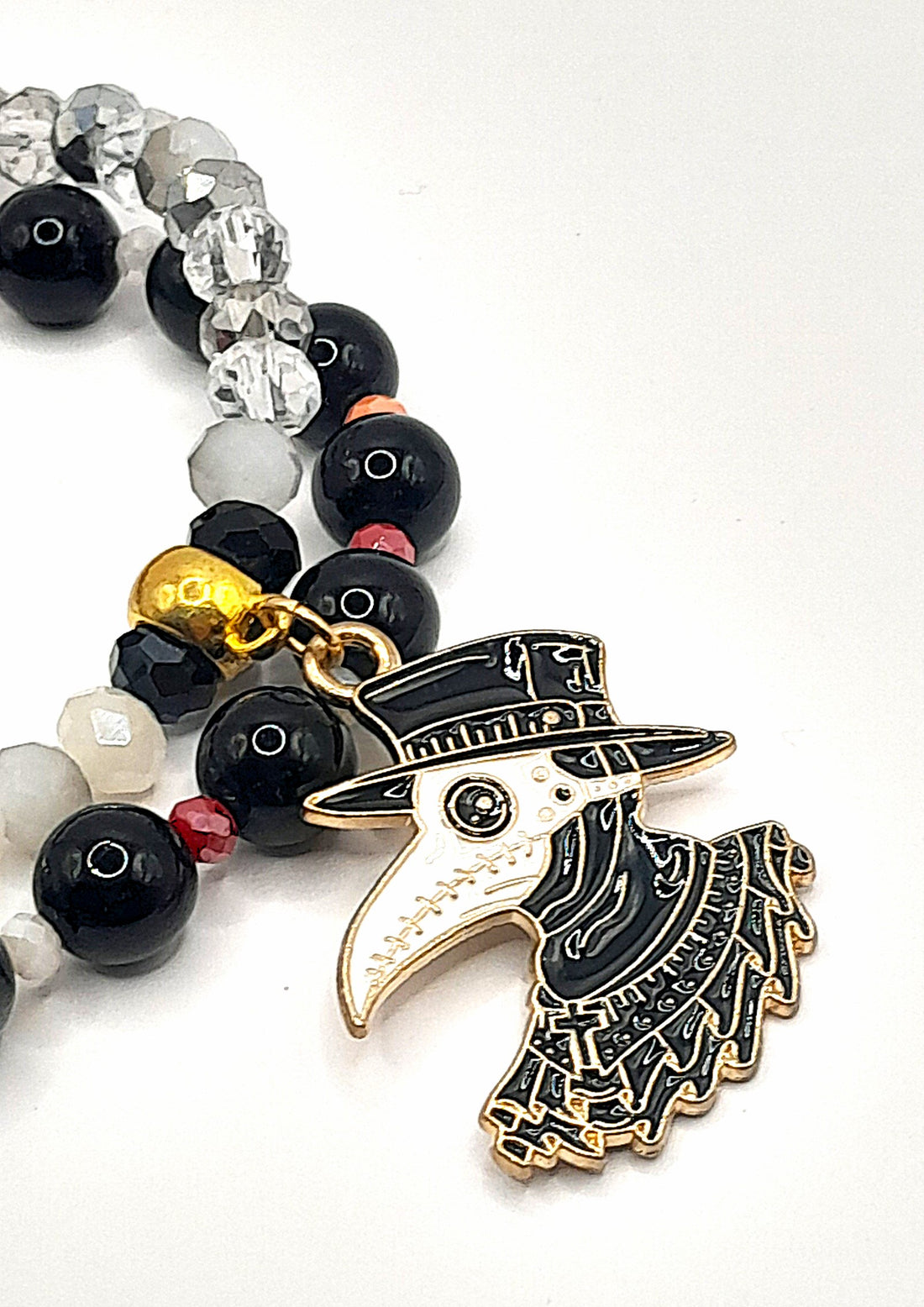
The Haunting History Behind the Plague Doctor Mask: Why It Looks Like a Crow
Share
If you’ve ever seen an old drawing or costume of a plague doctor, you’ve probably noticed the long, bird-like mask they wore. That sinister beak, the hollow eyes, and the dark cloak are all unsettling. But why did doctors during the time of the Black Death wear such strange and terrifying masks? Was it some kind of ancient protective magic? Or perhaps, something even more eerie?
Let’s dive into the haunting history of the plague doctor mask, why it looks like a crow, and how it became one of the most enduring symbols of death and disease.
A Time of Darkness: The Black Death
The origin of the plague doctor mask dates back to the 17th century, when Europe was repeatedly ravaged by outbreaks of the Black Death. This deadly disease wiped out millions and left the world in chaos. Physicians, the brave few who dared to treat plague victims, needed a way to protect themselves from contracting the disease. Medical knowledge was limited at the time, and doctors believed the plague was spread through "miasma" or poisoned air.
To defend against this invisible enemy, doctors donned a full-body outfit, which included the iconic beaked mask. But what made them choose such a bizarre design?
Why the Beak?
The long beak was more than just for looks—it served a practical, albeit misunderstood, purpose. The hollow nose of the mask was stuffed with aromatic herbs, dried flowers, spices, and sometimes vinegar-soaked cloths. The idea was that these fragrant items would purify the air and protect the wearer from breathing in the "bad air" thought to cause the plague. In a way, it was an early (though ineffective) form of a respirator.
But the mask’s resemblance to a crow or raven wasn’t just a coincidence. In the 17th century, these birds were often associated with death, scavenging on battlefields or circling above plague-ridden areas. Some believed they were harbingers of death, and in folklore, they often represented the crossing between life and death. By wearing a mask that resembled these ominous creatures, plague doctors may have symbolically aligned themselves with death, navigating between the living and the dead as they treated the sick.
The Fear Factor
In addition to protecting themselves, plague doctors likely struck fear into the hearts of anyone who saw them. Imagine looking out your window to see one of these eerie figures walking down your street, masked and cloaked in black, carrying a cane. To the people of the time, seeing a plague doctor was often a sign that death was near, as their appearance usually meant the plague had arrived in your area.
The cane they carried was used to poke or examine patients without touching them directly, adding to their grim, untouchable persona. In many ways, these figures became living symbols of the plague itself—a constant reminder that the Black Death was lurking in every breath.
From Past to Present: A Lasting Symbol
Today, the plague doctor mask has transcended history and become a symbol of the macabre. It’s a popular costume for Halloween, a recurring image in art and horror films, and a reminder of the human fear of disease and death. Its crow-like design continues to fascinate and haunt, a relic from one of the darkest periods in history.
So, the next time you see this haunting mask, remember that it was once an attempt to fight off a deadly pandemic—and a symbol of humanity's fragile place between life and death. Share this eerie tale with friends and let the strange story of the plague doctor mask live on.
Check out our Spooking Collection here.
*Product Lnk: Raven & Plague-Themed Beaded Bracelet Set – Hello Ganda Creations
